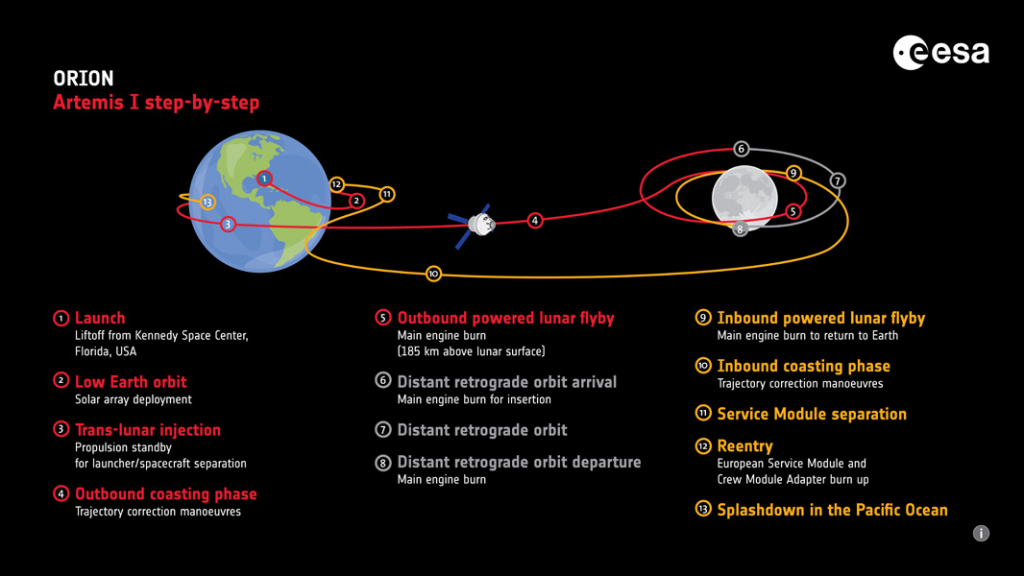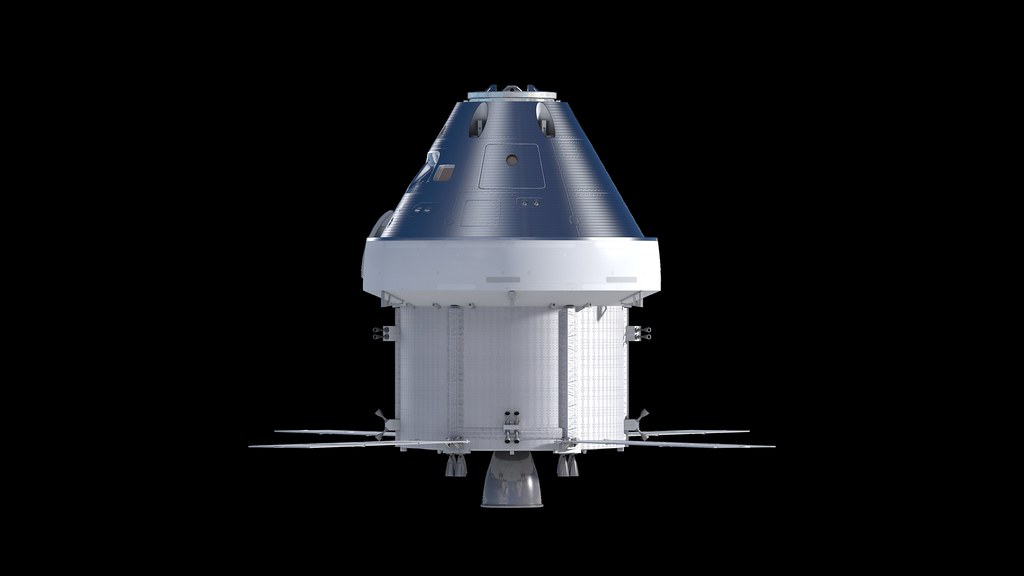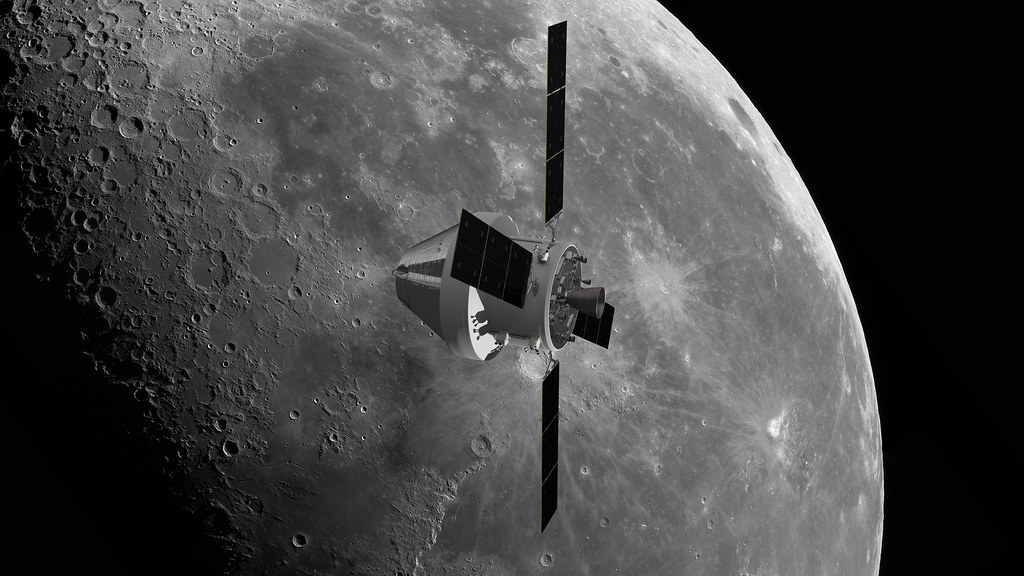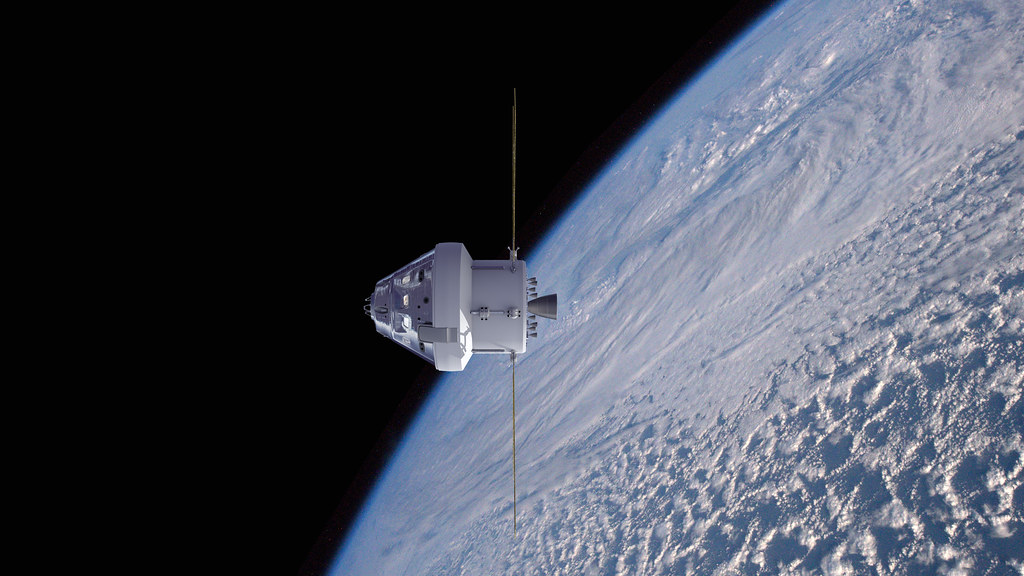The Artemis I mission is an uncrewed voyage to the Moon, looping around our natural satellite in an elongated orbit and then returning to Earth. The exact timeline of events is difficult to give in advance as orbital mechanics are a precise mathematical affair and times change notably depending on liftoff – down to the minute.

For the first Artemis mission, a test flight and the first in a series that will be taking humankind to the Moon, a specific request from the operations team is that the Orion spacecraft capsule splashes down during daylight in the Pacific Ocean. Working backwards in time from this splashdown requirement the mission profile can, and will, change depending on launch time. As Orion will travel half a million kilometers from Earth and our Moon itself moves at around a 1000 metres a second and considering the voyage to the Moon takes around five days… there are a lot of numbers to calculate!
In space movement is relative, when two spacecraft dock they might both be travelling up to 28 800 km/h, but relatively to each other one might be a few meters a second. This is why in spacecraft times we often talk of how an engine burn will change the velocity of flight, this is called delta-v, v for velocity and delta for change.
Artemis I profile
Nevertheless here is a general overview, timings can change:
NASA’s mega Moon rocket will propel Orion, its Interim Cryogenic Propulsion Stage (ICPS), and a number of secondary cubesats into Earth orbit — circling our planet for a few hours much like the International Space Station does — but at a different altitude.
The European Service Module’s four solar array wings unfold 18 minutes after launch, while Orion is still connected to the ICPS, to start charging the spacecraft’s batteries.
Around an hour after liftoff the ICPS will boost Orion and the secondary payloads farther away from Earth to gain momentum for its last boost to the Moon.
Around 90 minutes after launch the ICPS will fire its engine to propel Orion to the Moon, also called the trans-lunar injection. This is a massive boost that lasts just under 18 minutes of firing, and will change Orion’s velocity by 2802 m/s.
Twenty minutes after the boost, two hours after launch, the ICPS will detach from Orion and this is when the launch is considered a success, from here on Orion and its European Service Module are on their own.
The ICPS will then release the Artemis secondary payloads, small satellites that are along for the ride and will test new technology and perform science research. These include Argomoon, the first cubesat to be released, that will take pictures of the ICPS and transmit them to Earth. The cubesats each have their own mission profile and orbits that are beyond the scope of this blog, but ESA’s deep space antennas, along with the Goonhilly Earth Station in the UK, will be tracking six of the small satellites, ensuring they arrive where they need to be, and their data gets back home.
On to the Moon
Meanwhile Orion and the European Service Module will be en route to the Moon. Roughly eight hours after launch the European Service Module will perform its first of several trajectory correction burns using the main Orbital Maneuvering System (OMS) engine, providing a delta-v of 35 m/s.
From here, Orion will cruise to the Moon with minor corrections done by the European Service Module’s six clusters of reaction control engines. These are scheduled on flight day two, six, seven and nine.
Throughout the 10-day trip to the Moon the European Service Module will be pointing its four solar arrays in the best way to get as much sunlight to convert into electricity. Both the solar arrays and the spacecraft itself can be turned and rotated to track the Sun during the voyage to the Moon and back.
Arriving at the Moon
On the sixth day of flight, Orion will fly close to the Moon and the European Service Module will fire the main engine for a large boost that, counter-intuitively, will push Orion faster and away from the Moon. This 195 m/s change in speed uses the Moon’s gravity to assist it for an elliptical orbit around the Moon, not braking the spacecraft as you might expect. These manoeuvres are common in spaceflight and are called gravity-assists.
Two more engine fires are planned on flight day six and nine keep Orion on course, and then on the tenth day of flight the European Service Module will fire its engines to put Orion in a lunar orbit by braking it somewhat. This so-called distant retrograde orbit insertion requires only 149 m/s of delta-v using the gravity of the Moon to position Orion on an oval-shaped orbit.
Small “orbit maintenance” thruster burns from the six pods of reaction control thrusters on the European Service Module will keep Orion in its orbit and are expected every three days.
The orbit will take Orion as close as 100 km and as far as 70 000 km from the Moon’s surface – farther than any human-rated spacecraft has ever flown from Earth.
The return home
After two weeks of orbiting the Moon it is time to return home. On flight day 24 the European Service Module will initiate the “distant retrograde orbit departure”, kicking off a slingshot sequence of orbital mechanics to use the Moon’s gravitational pull again and set Orion on a trip back to our planet. The OMS needs to supply 91 m/s delta-v to set Orion on a closer course to the Moon.
From its distant point from the Moon, it takes 12 days to return closer to the lunar surface, where the European Service Module will fire the OMS engine for the last time on the Artemis I mission – at around 800 km from the lunar surface. Just like on the arrival to the Moon, the boost will accelerate the spacecraft on a collision course with Earth, providing 282 m/s of thrust, no problem for such a large engine. Using the Moon’s gravity and the final OMS boost, Orion will be on its 12-day return to Earth. The European Service Module’s reaction control thrusters will provide minor corrections to Orion’s course every three to four days.
Four more adjustments to the orbit are foreseen, with “Return Transit Corrections” setting the Orion crew capsule and European Service Module on course for a perfect goodbye.
Splashdown
Just 30 minutes before splashdown the European Service Module that provides thrust, air, water and electricity to the Orion spacecraft separate – the European Service Module does not survive the return to Earth but burns up harmlessly in our atmosphere, disintegrating brightly under the intense friction caused from traveling in our atmosphere at speeds faster than any spacecraft returned to land on Earth ever travelled before.
Mission event |
Day |
Perigee Raise Maneuver |
Flight Day 1 |
Trans-Lunar Injection |
Flight Day 1 |
ICPS/Orion Separation |
Flight Day 1 |
Upper State Separation – 1 |
Flight Day 1 |
ICPS Blowdown |
Flight Day 1 |
ICPS Disposal |
Flight Day 1 |
Outbound Trajectory Correction Burn-1 |
Flight Day 1 |
Outbound Trajectory Correction Burn-2 |
Flight Day 2 |
Outbound Trajectory Correction Burn-3 |
Flight Day 5 |
Outbound Trajectory Correction Burn-4 |
Flight Day 6 |
Outbound Powered Flyby |
Flight Day 6 |
Outbound Trajectory Correction Burn-5 |
Flight Day 7 |
Outbound Trajectory Correction Burn-6 |
Flight Day 9 |
Distant Retrograde Orbit Insertion |
Flight Day 10 |
Orbit Maintenace – 1 |
Flight Day 11 |
OM – 2 |
Flight Day 13 |
OM – 2a |
Flight Day 16 |
OM – 2b |
Flight Day 19 |
OM – 3 |
Flight Day 23 |
Distant Retrograde Orbit Departure |
Flight Day 24 |
Return Transit Correction -1 |
Flight Day 24 |
Return Transit Correction – 1a |
Flight Day 27 |
Return Transit Correction – 1b |
Flight Day 31 |
Return Transit Correction – 2 |
Flight Day 35 |
Return Transit Correction – 3 |
Flight Day 35 |
Return Power Flyby |
Flight Day 36 |
Return Transit Correction – 4 |
Flight Day 36 |
Return Transit Correction – 4a |
Flight Day 39 |
Return Transit Correction – 5 |
Flight Day 42 |
Return Transit Correction – 6 |
Flight Day 43 |
Crew Module Separation from Service Module |
Flight Day 43 |
Crew Module Raise |
Flight Day 43 |
Targeted Entry Interface |
Flight Day 43 |
Crew Module Entry Interface |
Flight Day 43 |
Splashdown |
Flight Day 43 |




 Automated Transfer Vehicle page
Automated Transfer Vehicle page ATV blog archive
ATV blog archive
Discussion: one comment
Job WELL DONE!